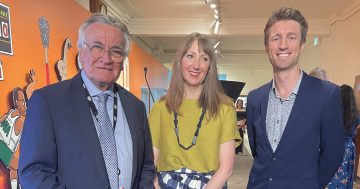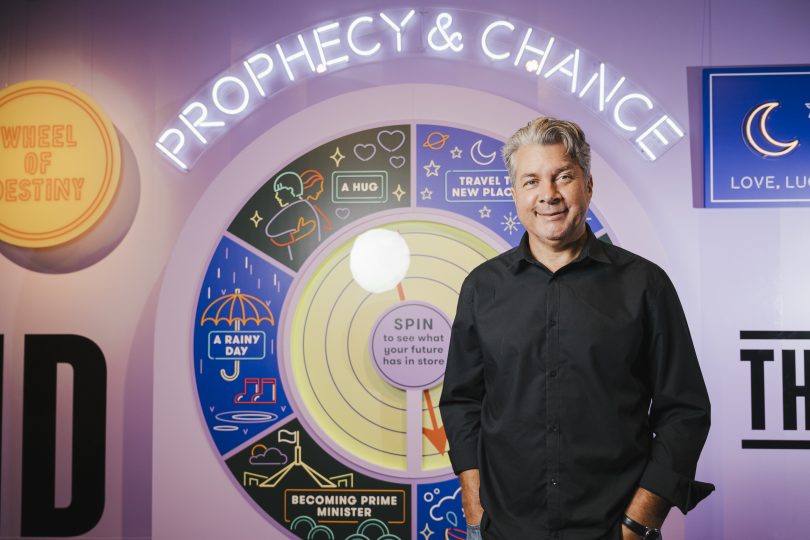
Behind the Lines cartoonist of the year, Glen le Lievre, at the MoAD exhibition launch. Photo: Jamila Toderas.
In a nod to the changing media world, as well as the immense challenges of 2021, the Museum of Australian Democracy’s cartoonist of the year is the first freelancer to receive the prestigious award – Glen le Lievre.
It’s well deserved: his wry, sharp and often poignant images include Prime Minister Scott Morrison popping up anxiously from a general’s be-medalled breast pocket and a flotilla of rats floating out from a sinking ship on golden parachutes (no explanation needed, really…).
This year’s Behind the Lines exhibition, the biggest ever, features 126 cartoons from 42 cartoonists, including eight new artists. And as tumultuous changes in the media industry continue to make editorial cartoonists vanish like an erased line, the ranks now include artists whose primary platforms are social media, street art and even merchandise.
“We thought ’21 would be a nice, quiet, easier year – who knew?” MoAD director Daryl Karp said at the exhibition launch. “Together, [these cartoonists] inspire, excite and provoke. They make us laugh and cry and at their best illuminate issues events in distinct and often direct ways.”
The exhibition’s theme is ‘prophecy and chance’, reflecting both the profoundly uncertain times we live in and the media’s obsession with forecasting trends and making predictions.
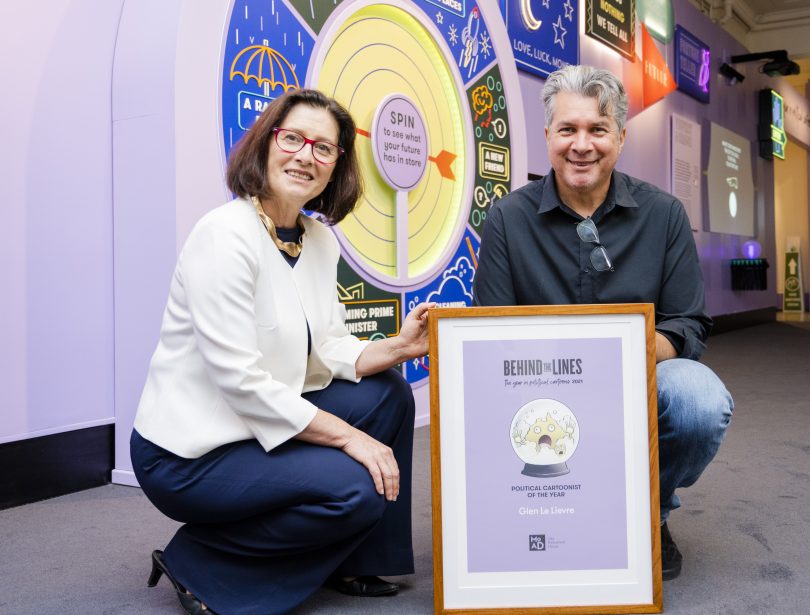
MoAD director Daryl Karp with Glen Le Lievre. Photo: Jamila Toderas.
Curator Holly Williams says that several themes stood out strongly as they assembled the works, including the issues around women and gender in parliament and the realisation that political cartooning had not represented diversity particularly well itself. The Museum responded by seeking out women and other artists from diverse backgrounds, artists who worked on street installations and Instagram stories.
“We are leaning into the 21st century,” she says. “We wanted to ensure that we brought new voices in but kept the strength that exists here.
“If the Museum hadn’t opened our remit to artists who self publish – and Glen was one of the first – it would be a shrinking pool of cartoonists working on fewer and fewer papers.”
Williams points out that it can be risky business to self-publish cartoons in an era when taking offence has become a matter of course and without the safety net of editorial gatekeeping.
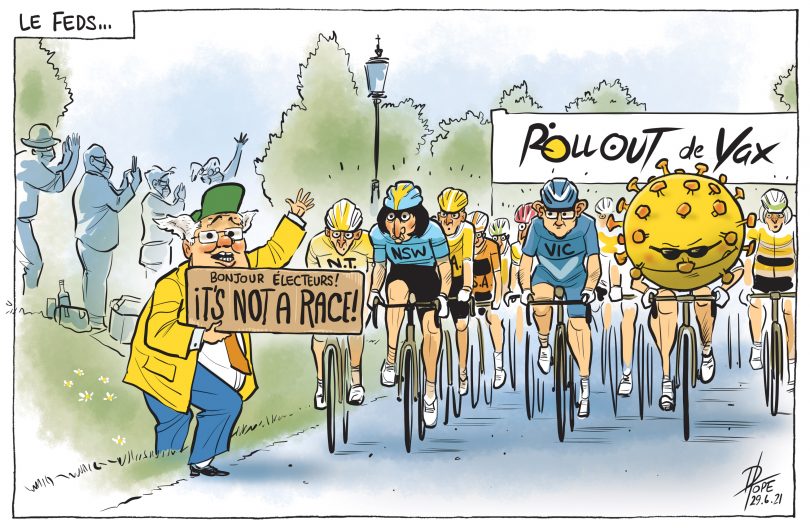
David Pope’s Rollout de Vax cartoon. Image: MoAD
And cartooning can be a very serious business. For the second year, Behind the Lines also has a section focussing on a single issue, this time Australia’s long-running war in Afghanistan.
Two decades’ worth of cartoons, some of them frighteningly prescient about the war’s likely course, were selected and captioned by veteran journalist Karen Middleton who made multiple visits to the war-torn country as a correspondent.
She’s been under rocket attack while flying in a Chinook between Tarin Kowt and Kandahar, spent time with village elders, warlords and government officials and sat with soldiers who had just learned of their mate’s death.
“People ask what’s funny about a war, but cartoons aren’t always funny,” she says. “Sometimes they can be deeply moving, complicated or sometimes very simple and those can be the ones that strike you the most.”
The opening image of the section is of a veiled woman watching, with deep sadness, as allies flee. Who will escape and who will be left behind, viewers wonder?
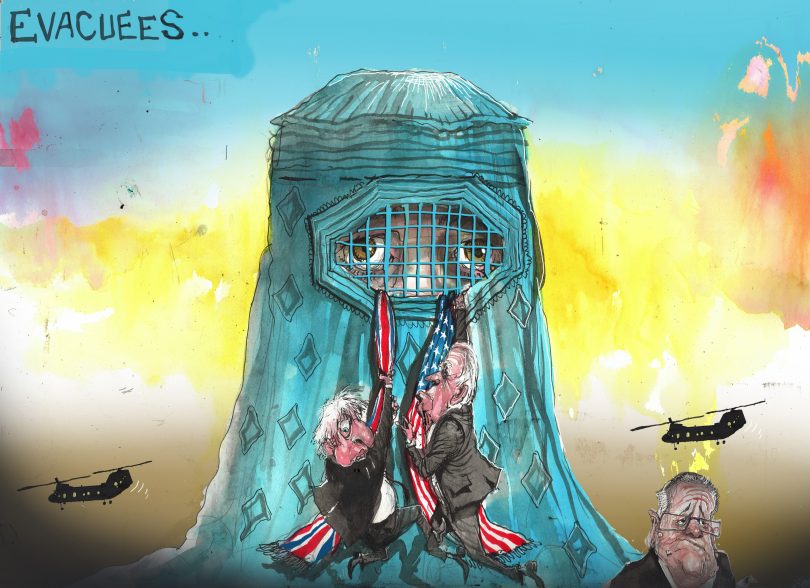
David Rowe’s cartoon of an Afghan woman watching the allies flee Afghanistan. Image: MoAD.
And, Middleton says, these works also demonstrate how the best cartooning is distilled journalism.
“Political cartoonists do something that we who use words can’t do,” she says. “They communicate so many things with a single image. They do it powerfully and long may they reign.”
Behind the Lines – The Year in Political Cartoons 2021: Prophecy and Chance is on at the Museum of Australian Democracy until November 2022.












